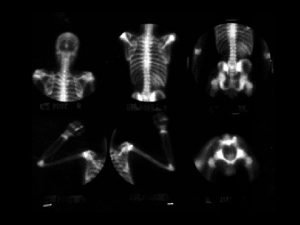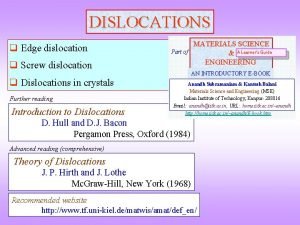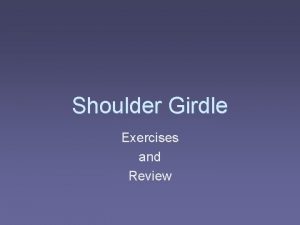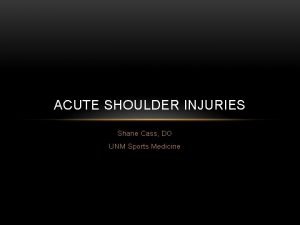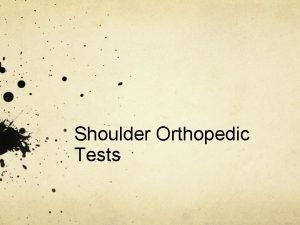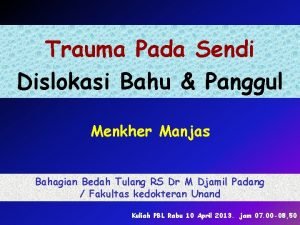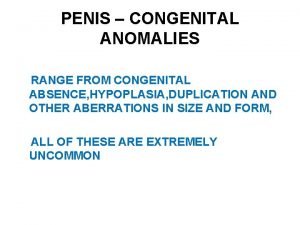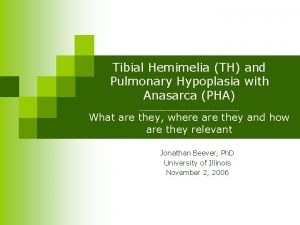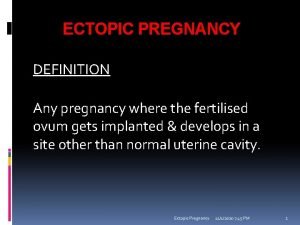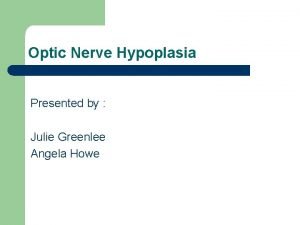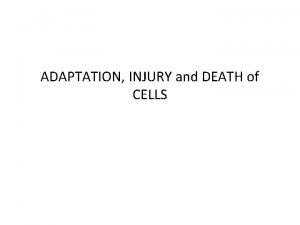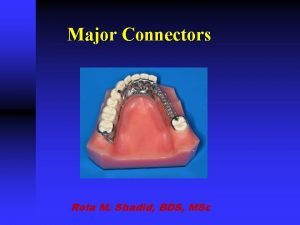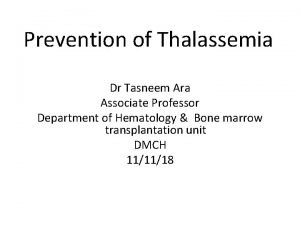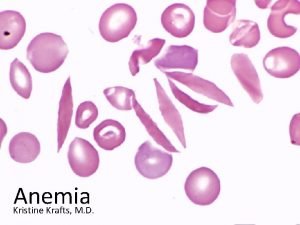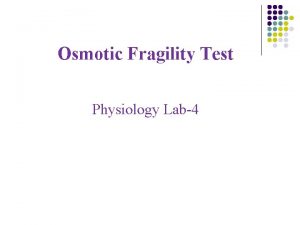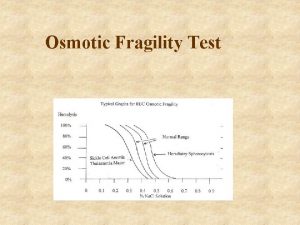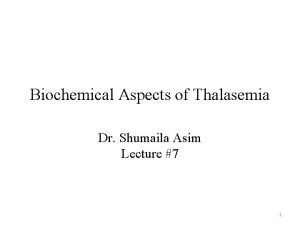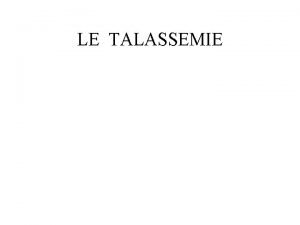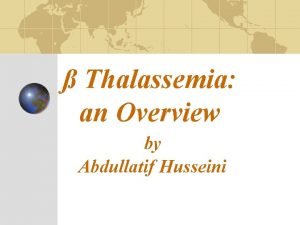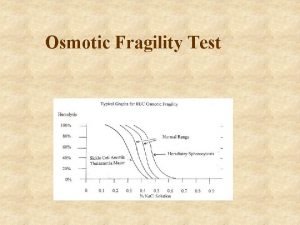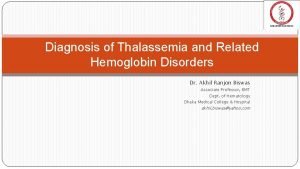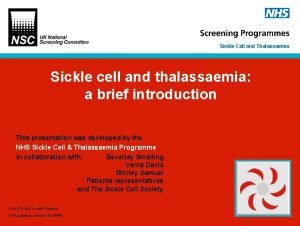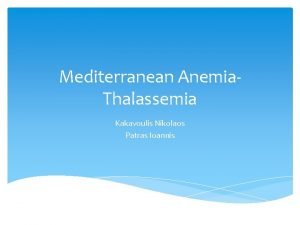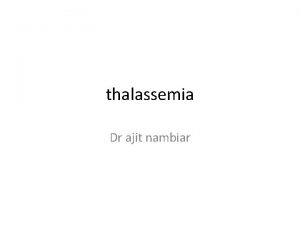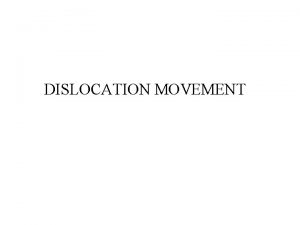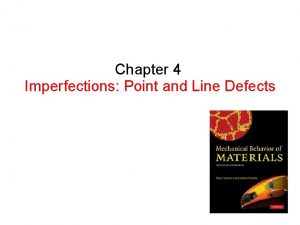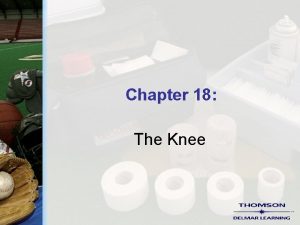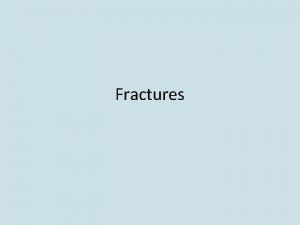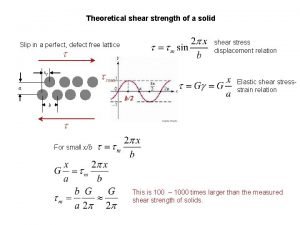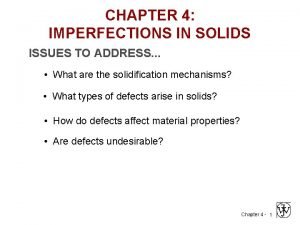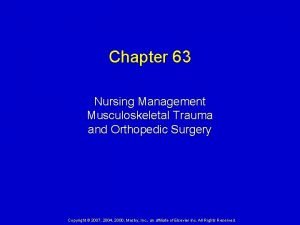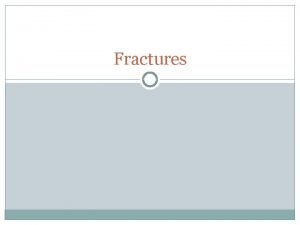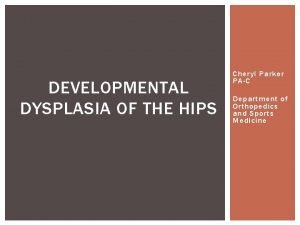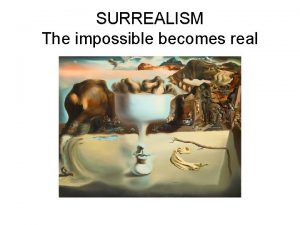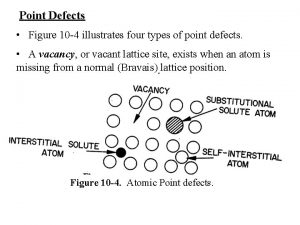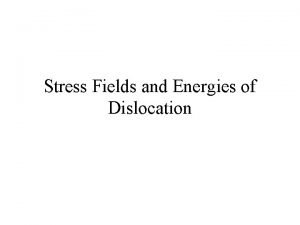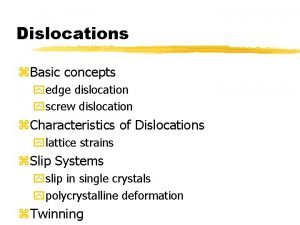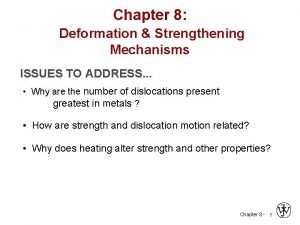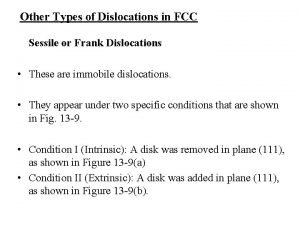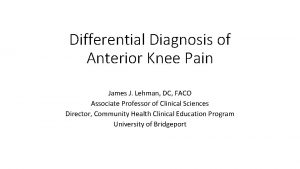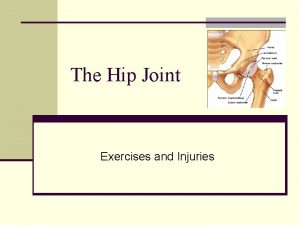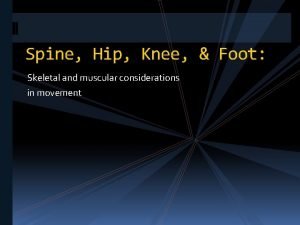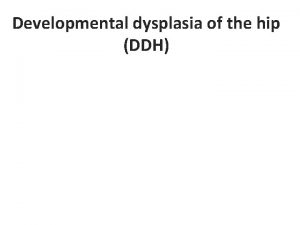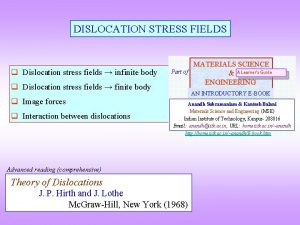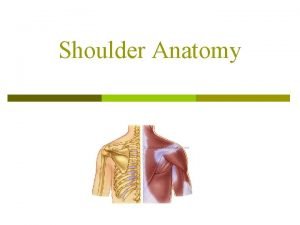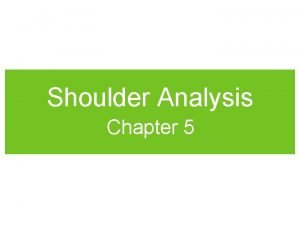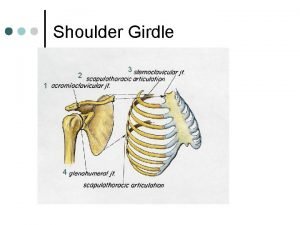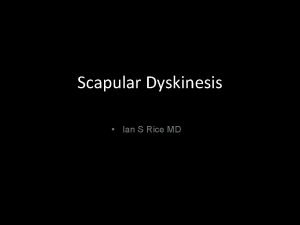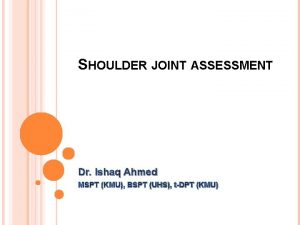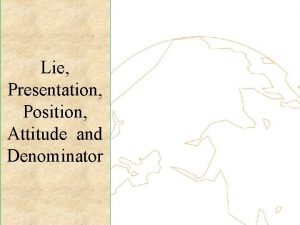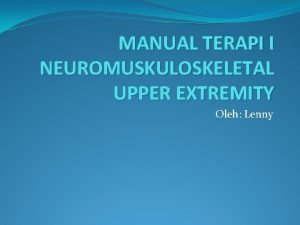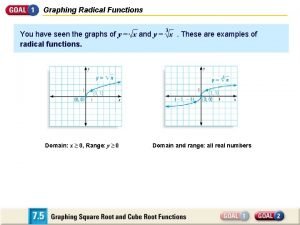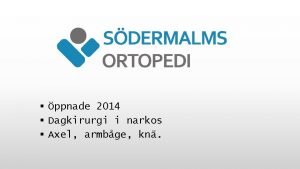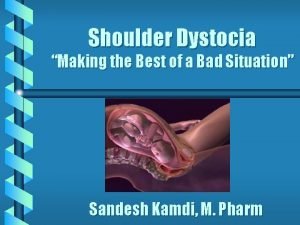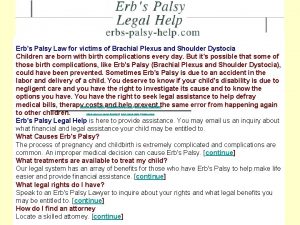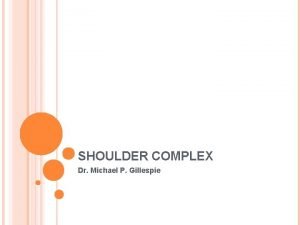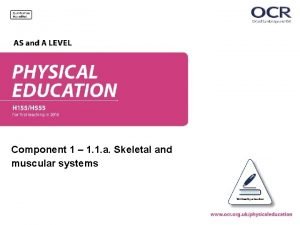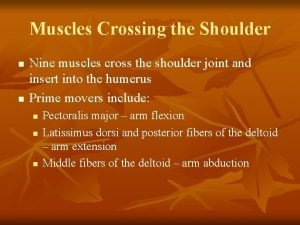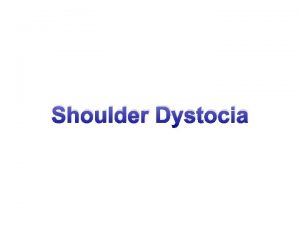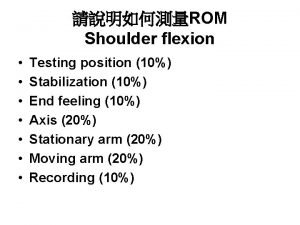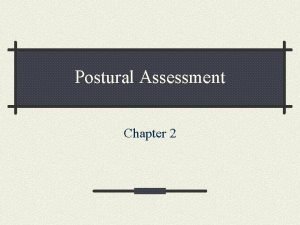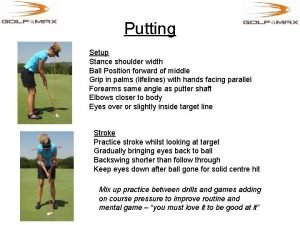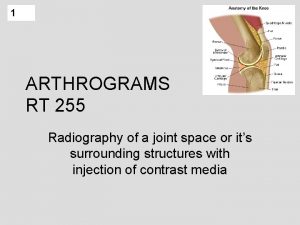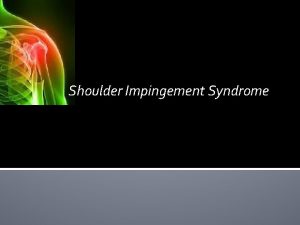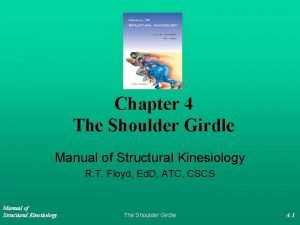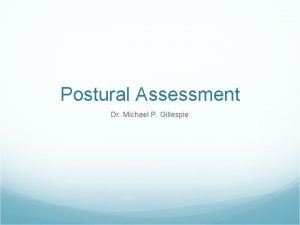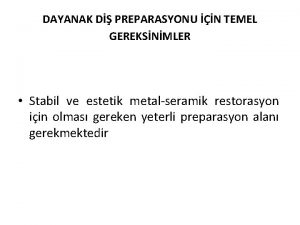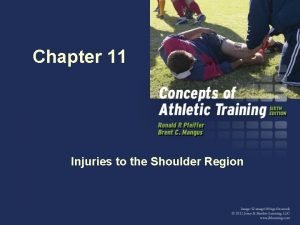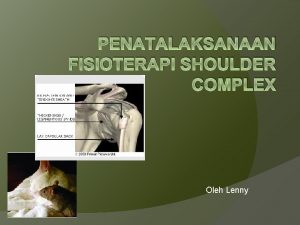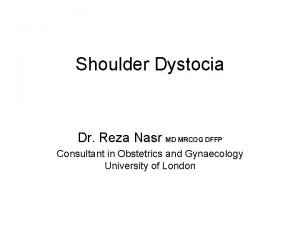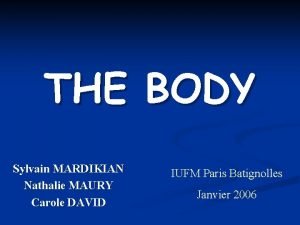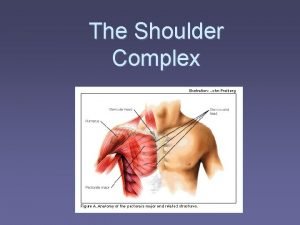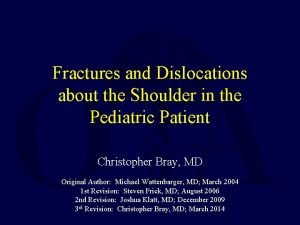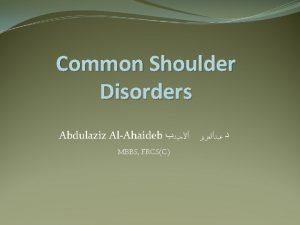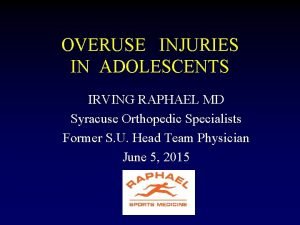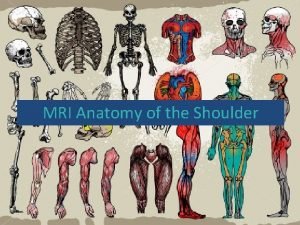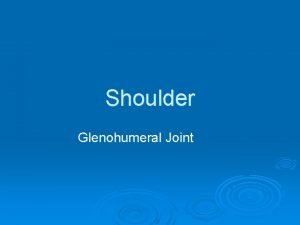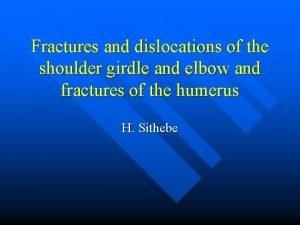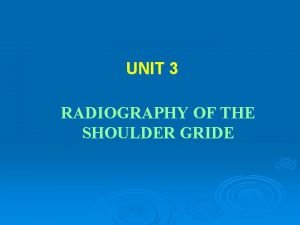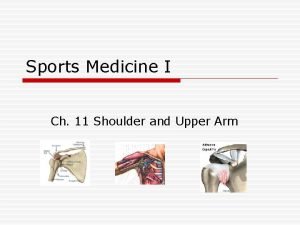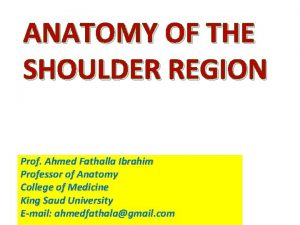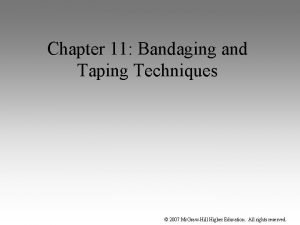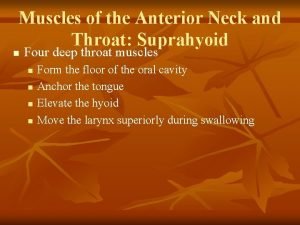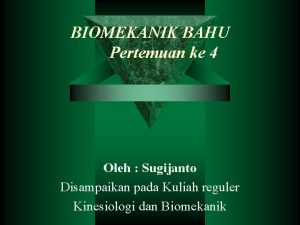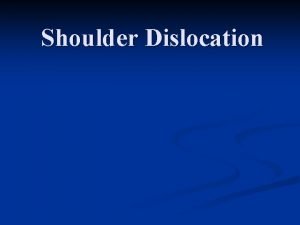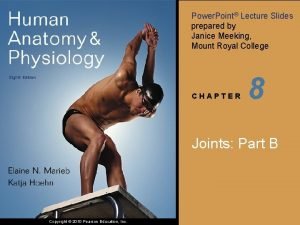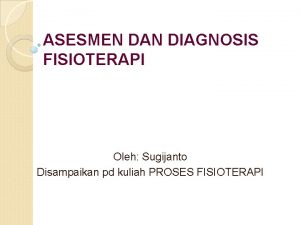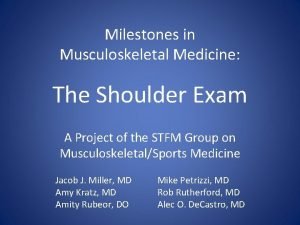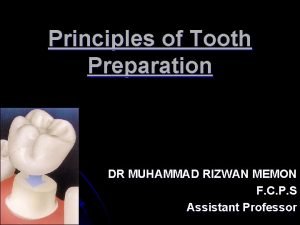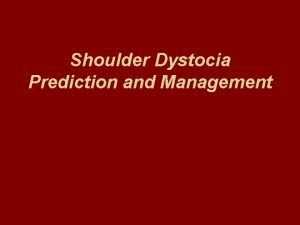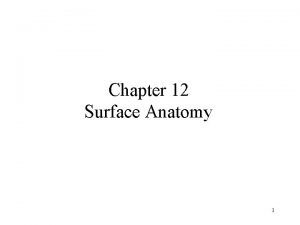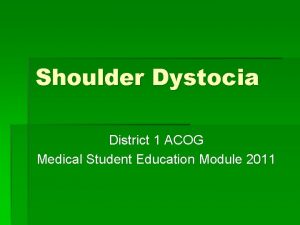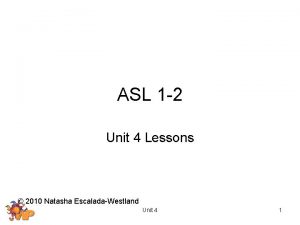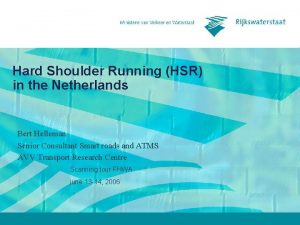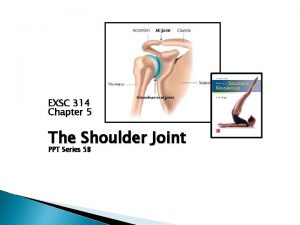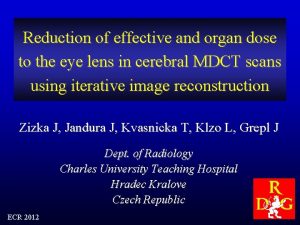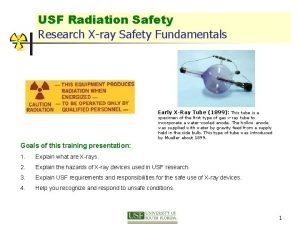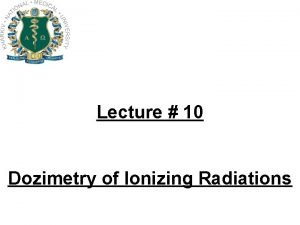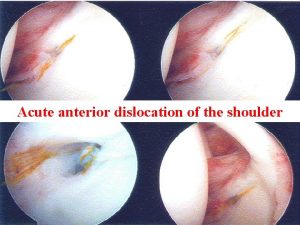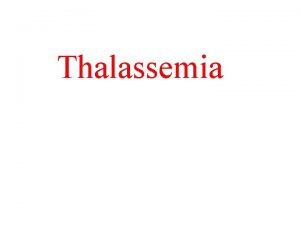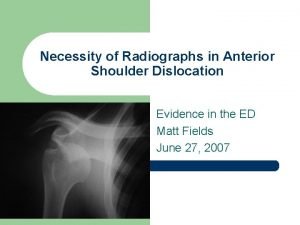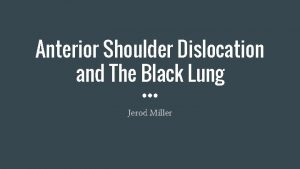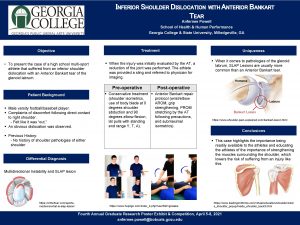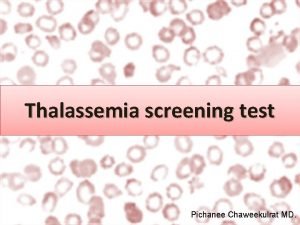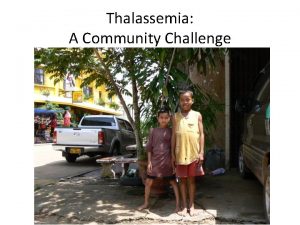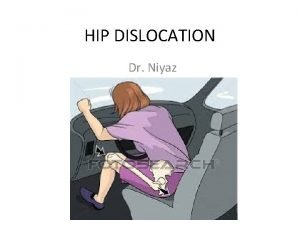Radiation Hypoplasia Anterior Shoulder Dislocation Thalassemia Major Ewings



















































































































































































- Slides: 179




























































































































Radiation Hypoplasia

Anterior Shoulder Dislocation

Thalassemia Major

Ewing’s Sarcoma

Monteggia fracture

Osteoid Osteoma

Parosteal osteosarcoma

Synovial Osteochondromatosis

UBC w/ path fx

Paget’s Dz of the Spine

Osteopetrosis • Findings: – generalized increased bone density • rare bone dysplasia • Trabecular --> compact • Anemia w/extramedullary hematopoiesis • ddx: (children) – pyknodysostosis – renal osteodystrophy – vit A, D – Lead – Fluorosis

Paget’s Disease • Findings: – Enlargement of the right femoral head with course and thickened trabecula – Asymmetric lucency of the right superior acetabulum • ddx: – NONE! – This is an Aunt Minnie!

Brown Tumor • Findings: – expansile, lytic rib lesion – lytic lesion of 2 nd PP – subperiosteal bone resorption – arterial Ca 2+ • Usually secondary to CRF but may be primary • check for PT adenoma • if on dialysis, check for amyloid arthropathy • ddx: – multiple myeloma – metastases

Bucket-Handle Tear • Findings: – “double PCL sign” - torn meniscus BELOW normal PCL on sag view – Above ACL on cor view – Truncation of medial meniscus – Joint effusion • Medial = 3 x lateral • Locked knee • ddx: – torn ACL, PCL – torn meniscus

Ankylosing Spondylitis • Findings: – fused SI joints – right hip erosions – lumbar syndesmophytes • Sero-negative chronic inflammatory disease • Starts in the low back and progesses upward • ddx (sacroilitis) – bilateral • ank spond • IBD – unilateral • Reiter’s • psoriasis

Femoral Head AVN • Findings: – bilateral femoral head AVN w/o collapse – right pelvic renal tx • Ddx: – Pancreatitis – Sickle Cell Dz – Caison’s Dz – etc…

Lateral Patellar Dislocation • Findings: – bone marrow edema of lateral femoral condyle and medial patella – injury of the medial patellar retinaculum – joint effusion • Patella usually dislocates laterally • Look for constellation of findings • Ddx: – NONE! – This is an Aunt Minnie

Metastatic Renal Cell • Findings: – expansile lytic lesion of the distal ulnar metaphysis – well-defined margins – internal septations – No periostitis • ddx: – ABC – Giant cell tumor

Homolateral Lisfranc farcture/dislocation • Findings – Widening between the base of 1 st and 2 nd metatarsals. – lateral subluxation of the second through fifth metatarsals • dislocation is relative to the cuneiforms: – homolateral – divergent (1 st MT goes medial) • can be due to trauma or in patients with diabetic neuropathy

Osteochondritis Dissecans • • • Findings: – defect in the medial talar dome representing an osteochondral fracture Unknown etiology but most common causes are: – trauma – osteonecrosis Do MRI w/ or w/o arthro to look for free fragment

Pellegrini-Stieda disease • • Findings: – Linear ossific density adjacent to the medial femoral condyle Calcification or ossification of the MCL at its insertion site Sequela of previous injury NOT acute, usually not the site of pain

Bilateral SCFE • • Findings: – posteromedial displacement of femoral epiphyses Most common cause of limp in adolescents SH-I shearing fx high incidence in black, overweight pubertal males 75% uni, 25% bi Look for line along lateral femoral neck to transect 1/6 th of epiphysis Must be pinned or fixed

Synovial Sarcoma • • Findings: – Dense soft tissue mass – no bony involvement – heterogeneous T 1 Rare soft tissue tumor of children May show calcification Internal hemorrhage and necrosis are common Found close to joints Prone to metastases ddx: (plain film only) – hematoma

Unicameral Bone Cyst • • • Findings: – lytic, slightly expansile lesion of the proximal metaphysis with a thin sclerotic margin and fracture a. k. a. simple bone cyst fluid-filled cavity common lesion of children, unknown etiology asymptomatic unless fracture (“fallen fragment sign”)

Melorheostosis • • • Findings: – Peripheral hyperostosis of the tibia producing a wavy sclerotic diaphyseal contour Rare bone disorder of childhood “candle wax” dripping down the bone appearance presents with PAIN and joint swelling ddx: – Paget’s – myelofibrosis – renal osteodystrophy – sclerotic mets

Congenital Reubella w/patent ductus arteriosis • • • Findings: – cardiomegaly, enlarged pulm arteries – longitudinal striations of sclerotic and radiolucent areas at the metaphyses (“celery stalk” appearance) – epiphyseal center not seen – dense, irregular metaphyseal bands most common viral infxn w/bone changes (also CMV) IUGR, TTP, cataracts, sensorineural hearing loss, PDA, pulm art and Ao stenoses

Aneurysmal bone cyst • Findings: – Lucent end of bone lesion in the proximal tibia – Slightly expansile, mild periosteal reaction – Fluid-fluid level on MRI • ddx: – Giant cell tumor – Unicameral bone cyst – Fibrous dysplasia – Chondroblastoma (rare)

Inferior shoulder dislocation • Findings: – Inferior dislocation of humeral head and a deep cleft in the superior portion • ddx: – Anterior dislocation

Dens metastasis, pathologic fracture, and C 1 -2 instability • Findings: – 8 mm anterior subluxation of C 1 on C 2 with flexion – Conventional tomogram shows C 2/dens lytic lesion and pathologic fracture • ddx: – Rheumatoid – Dens fracture

C 3 vertebra plana (multiple myeloma) • Findings: – Complete compression of C 3 (look at the vertebral bodies and their corresponding posterior elements!) • ddx: – Metastasis – Kommel’s disease (if see gas and collapse) – EG

Calcaneal stress fracture • Findings: – Patchy linear and arclike sclerosis in the posterior calcaneous • ddx: – NONE! – This is an Aunt Minnie!

Enchondroma • Findings: – Patchy sclerotic intramedullay lesion in the proximal tibial metadiaphysis – “Rings and arcs” calcification • ddx: – Bone infarct

Cleidocranial dysplasia • Findings: – Absent central portion of clavicle with rudimentary medial and lateral portions – Congenital coxa vara – Widened appearance of pubis (due to delayed ossification) • ddx: – NONE! – This is an Aunt Minnie!

Cystercercosis • Findings: – Innumerable round and oval soft tissue calcifications • ddx: – Diffuse dystrophic or metastatic calcifications

Giant cell tumor • Findings: – Expansile lucent lesion in the fibular head containing multiple thin septa • ddx: – Aneurysmal bone cyst – Fibrous dysplasia – Lytic metastasis – Brown tumor – Chondroblastoma (rare)

Hypertrophic Osteoarthritis • • Findings: – Diffuse symmetrical periosteal reaction of the distal radius, ulna, and tibia ddx: – Adults • Pulmonary • Pachydermoperiostitis • Vascular insufficiency • Thyroid acropachy • Fluorosis – Peds • Caffey disease (up to 6 mo. ) • Leukemia • Rickets • Hypervitaminosis A

Hyperparathyroidism • Findings: – “salt and pepper” skull – Osteopenia with course trabecula – Subperiosteal resorption • ddx: – NONE! – This is an Aunt Minnie!

Tumoral Calcinosis • Findings: – Multiple dense calcifications around the joints of the fingers and wrists • ddx: (soft tissue Ca 2+) – Renal osteodystrophy – Heterotopic ossification – Metastatic Ca 2+ – Milk-alkali syndrome – Hypervitaminosis D – Scleroderma – Dermatomyositis

Lymphoma • Findings: – Permeative lytic lesion of the humeral diaphysis – Periosteal reaction and soft tissue swelling • ddx: – Osteomyelitis – Metastasis – Ewing’s Sarcoma – EG

Osteomalacia w/ Looser’s zone • Findings: – Osteopenia – Horizontal linear lucency in the medial femoral metaphysis – Causes: • Renal osteodystrophy • Hyperparathyroidism • Vit D deficiency • ddx: – NONE! – This is an Aunt Minnie!

Acute fracture • Findings: – Lipohemarthrosis – No visible fracture but one is definitely present • ddx: – NONE! – This is an Aunt Minnie!

Osteochondromatosis • Findings: – Flared metaphyses due to multiple bony outgrowths = exostoses – Contiguous with cortex and medulla – Point away from joint – Look for pain (after bony maturation) – check cartilagenous cap = >2 cm, risk of chondrosarcoma • ddx: – NONE! – This is an Aunt Minnie!

Paget’s Disease w/ sarcomatous degeneration • Findings: – Cortical thickening with mixed lytic and sclerotic trabecular pattern and bony enlargement – Large lytic lesion of the right ilium and sacral ala • ddx: – Diffuse sclerotic and lytic mets

Rickets • Findings: – Cupped and frayed metaphyses – Wide physes (increased osteoid) – Long bone bowing – Decreased bone density • ddx: – NONE! – This is an Aunt Minnie!

Bilateral perched lumbar facets • Findings: – Mild anterolisthesis of L 4 on L 5 – Inferior L 4 facets perched on superior L 5 facets • ddx: – NONE! – This is an Aunt Minnie!

Rheumatoid arthritis • Findings: – Destruction of the dens and the anterior C 1 arch by a soft tissue mass – Impression of the anterior thecal sac with slight deformation of the cervical cord • ddx: – Infection – Metastasis

Septic Arthritis • Findings: – Lytic and sclerotic destruction of the great toe MTP joint – Joint space narrowing – Periosteal reaction – Soft tissue swelling • ddx: – Charcot joint

Potts Disease • Findings: – Complete collapse of L 4 and cauda equina compression – Subligamentous soft tissue extension to L 3 body • ddx: – Staph aurius – Gram negatives (IVDA)

Enchondroma • Findings: – Lucent, slightly expansile lesion of the fifth MC • ddx: – Giant cell tumor – UBC – Fibrous dysplasia

Discitis • Findings: – T 12 -L 1 disc space narrowing with endplate destruction – CT demonstrates presence of gas • ddx: – NONE! – This is an Aunt Minnie!

Right hip synovitis • Findings: – Asymmetric teardrop distance (greater on right) – Normal joint space • ddx: – Infection – Rheumatoid

Osteogenesis Imperfecta Type II • Findings: – multiple fractures, bowing and short ribbon-like bones • Type II - lethal - “ribbon bones” and fractures too numerous to count • Disturbances in type I collagen – lack of normal collagen – osteoperosis – fractures – blue sclera • ddx: – NONE! – This is an Aunt Minnie!

Polyostotic fibrous dysplasia • Findings: – Multiple lucent and expansile lesions – “ground glass matrix” – May be seen on precocious puberty – Mc. Cune Albright syndrom • ddx: – Multiple enchondromas

Renal osteodystrophy • Findings: – Osteopenia – Prominent trabecular pattern – “rugger jersey” spine • ddx: – NONE! – This is an Aunt Minnie!

Eosinophilic Granuloma • Findings: – Well-defined lytic lesion in the frontal skull crossing the diploic space – Overlying scalp swelling – Positive bone scan • ddx: – Osteomyelitis – Metastasis

Prostate metastases • Findings: – Diffuse sclerosis • ddx: – Breat, GI mets – myelofibrosis – renal osteodystrophy – osteopetrosis – multiple myeloma
 Anterior shoulder dislocation presentation
Anterior shoulder dislocation presentation Thalassemia alpha and beta
Thalassemia alpha and beta Edge and screw dislocation
Edge and screw dislocation Shoulder dislocation exercise bodybuilding
Shoulder dislocation exercise bodybuilding Axillary view shoulder dislocation
Axillary view shoulder dislocation Abbot saunders test
Abbot saunders test Glenohumeralis
Glenohumeralis Shoulder dislocation strapping
Shoulder dislocation strapping Axillary view shoulder dislocation
Axillary view shoulder dislocation Hypoplasia of penis
Hypoplasia of penis Kidney agenesis
Kidney agenesis Pulmonary hypoplasia with anasarca
Pulmonary hypoplasia with anasarca Tubal hypoplasia definition
Tubal hypoplasia definition Optic nerve hypoplasia
Optic nerve hypoplasia Hypoplasia
Hypoplasia Infraglenoid tubercle
Infraglenoid tubercle Horse shoe major connector
Horse shoe major connector Lower major connectors
Lower major connectors Prevention of thalassemia
Prevention of thalassemia Immune system structure
Immune system structure Karen playforth md
Karen playforth md Homozygous beta thalassemia
Homozygous beta thalassemia Kristine krafts md
Kristine krafts md Thalassemia osmotic fragility
Thalassemia osmotic fragility Osmotic fragility test calculation
Osmotic fragility test calculation Beta thalassemia genotypes
Beta thalassemia genotypes Corpi di heinz talassemia
Corpi di heinz talassemia Lab diagnosis of thalassemia
Lab diagnosis of thalassemia Anemia latin
Anemia latin Osmotic fragility definition
Osmotic fragility definition Dr darakhshan ansari
Dr darakhshan ansari Jan lundgren miun
Jan lundgren miun Glimpase
Glimpase Thalassemia
Thalassemia Difference between sickle cell anaemia and thalassemia
Difference between sickle cell anaemia and thalassemia What is thalassemia
What is thalassemia Symptoms of beta thalassemia trait
Symptoms of beta thalassemia trait Thalassemia carrier
Thalassemia carrier Thalassemia
Thalassemia Thalassemia features
Thalassemia features Dislocation glide vs climb
Dislocation glide vs climb Dislocation loop
Dislocation loop Patellar dislocation
Patellar dislocation Dislocation coin et vis
Dislocation coin et vis Levitation art definition
Levitation art definition Fr. colli humeri l. sin
Fr. colli humeri l. sin Theoretical shear stress
Theoretical shear stress Palpation
Palpation Difference between edge and screw dislocation
Difference between edge and screw dislocation Subcoracoid dislocation
Subcoracoid dislocation Nursing management of dislocation
Nursing management of dislocation Gonarthrosis arthrosis of knee
Gonarthrosis arthrosis of knee Fractura colli chirurgici humeri
Fractura colli chirurgici humeri Piston test for hip dislocation
Piston test for hip dislocation Transformation surrealism definition
Transformation surrealism definition Edge dislocation
Edge dislocation Dislocation energy
Dislocation energy Transparency surrealism
Transparency surrealism Posterior dislocation
Posterior dislocation Mixed dislocation
Mixed dislocation Dislocation in metals
Dislocation in metals Thompson tetrahedron
Thompson tetrahedron Patella dislocation
Patella dislocation Bo jackson hip dislocation
Bo jackson hip dislocation Tennis elbow irving
Tennis elbow irving Weak abductors
Weak abductors Dislocatio ad longitudinem
Dislocatio ad longitudinem Alpha angle hip dysplasia
Alpha angle hip dysplasia Mixed dislocation
Mixed dislocation Shoulder adduction muscles
Shoulder adduction muscles Name of muscle
Name of muscle Shoulder girdle landmarks
Shoulder girdle landmarks Shoulder flexion agonist and antagonist
Shoulder flexion agonist and antagonist Lateral scapular winging
Lateral scapular winging Dugas test
Dugas test Gothic shoulders posture
Gothic shoulders posture Literary devices in lord of the flies chapter 12
Literary devices in lord of the flies chapter 12 Glenohumeral ligament attachment
Glenohumeral ligament attachment Night i met einstein
Night i met einstein Denominator occiput
Denominator occiput Suprahumeral joint
Suprahumeral joint Radical functions in real life
Radical functions in real life Smärtritning
Smärtritning End feel firm adalah
End feel firm adalah Scapular protraction
Scapular protraction Mc robert maneuver
Mc robert maneuver Wat erb
Wat erb Parts of the shoulder
Parts of the shoulder Scapular muscles
Scapular muscles Flattened shoulder
Flattened shoulder Horseshoe hose load
Horseshoe hose load Dina definition
Dina definition Xxxxbeef
Xxxxbeef Shoulder ligaments
Shoulder ligaments Shoulder flexion agonist and antagonist
Shoulder flexion agonist and antagonist Fulcrum test shoulder
Fulcrum test shoulder Of the nine muscles that cross the shoulder joint
Of the nine muscles that cross the shoulder joint Transthoracic humerus
Transthoracic humerus Helperr mnemonic
Helperr mnemonic Rom shoulder flexion
Rom shoulder flexion Milwaukee shoulder syndrome
Milwaukee shoulder syndrome Layer syndrome posture
Layer syndrome posture Romberg test interpretation
Romberg test interpretation Putting stance ball position
Putting stance ball position Axiolateral shoulder
Axiolateral shoulder Shoulder impingement exercises
Shoulder impingement exercises Medial margin
Medial margin Gothic shoulders posture
Gothic shoulders posture Shoulder taper length
Shoulder taper length Pistol belt drag
Pistol belt drag Near hip near shoulder tackling
Near hip near shoulder tackling Shoulder basamak tipi
Shoulder basamak tipi Velpeau view
Velpeau view Chapter 11 injuries to the shoulder region
Chapter 11 injuries to the shoulder region Posisi mlpp shoulder
Posisi mlpp shoulder Twisted shoulder joint
Twisted shoulder joint Dr reza nasr
Dr reza nasr Carol maury
Carol maury Actions of rhomboids
Actions of rhomboids Deltoid tuberosity
Deltoid tuberosity Shoulder impringement
Shoulder impringement Policeman tip hand deformity
Policeman tip hand deformity Spinal cord injury shoulder exercises
Spinal cord injury shoulder exercises Human crutch method first aid
Human crutch method first aid Coaptation splint humerus
Coaptation splint humerus Shoulder outlet view positioning
Shoulder outlet view positioning Shoulder trauma irving
Shoulder trauma irving Shoulder mri anatomy
Shoulder mri anatomy Goniometer wrist
Goniometer wrist Lion shoulder height
Lion shoulder height Gothic shoulders posture
Gothic shoulders posture Shoulder partner meaning
Shoulder partner meaning Proiezione stryker notch
Proiezione stryker notch Muscles crossing the shoulder joint
Muscles crossing the shoulder joint Little league shoulder pain location
Little league shoulder pain location Unity over the shoulder camera
Unity over the shoulder camera Types of drowning
Types of drowning Hanging u slab
Hanging u slab Shoulder x ray positioning lateral
Shoulder x ray positioning lateral Shoulder spica wrap purpose
Shoulder spica wrap purpose Infraspinatus synergist
Infraspinatus synergist Relations of shoulder joint
Relations of shoulder joint Checkrein taping definition
Checkrein taping definition Muscles of the anterior neck and throat
Muscles of the anterior neck and throat Posisi mlpp shoulder
Posisi mlpp shoulder Shoulder partner meaning
Shoulder partner meaning X ray of shoulder
X ray of shoulder Puttiplat
Puttiplat _____ muscles run across the cheek.
_____ muscles run across the cheek. Schede type vertical suspension
Schede type vertical suspension Kinesio tape for supraspinatus impingement
Kinesio tape for supraspinatus impingement Sits muscle
Sits muscle Shoulder anatomy
Shoulder anatomy Asesmen fisioterapi
Asesmen fisioterapi Milwaukee shoulder syndrome
Milwaukee shoulder syndrome Deltoid tuberosity
Deltoid tuberosity Gleniod labrum
Gleniod labrum Standing up position medical term
Standing up position medical term Mazion shoulder maneuver
Mazion shoulder maneuver Shoulder margin
Shoulder margin Drop arm test
Drop arm test Gothic shoulders posture
Gothic shoulders posture Helper mnemonic for shoulder dystocia
Helper mnemonic for shoulder dystocia Sternoclavicular
Sternoclavicular Shoulder partner meaning
Shoulder partner meaning Long shot example
Long shot example Pelvis surface anatomy
Pelvis surface anatomy What is flush left headline?
What is flush left headline? Helper in shoulder dystocia
Helper in shoulder dystocia Master asl unit 4 pdf
Master asl unit 4 pdf Calamity bert
Calamity bert Teres minor abduction
Teres minor abduction Lingual surface
Lingual surface Rotator cuff muscles
Rotator cuff muscles Aircast quick fit shoulder immobilizer
Aircast quick fit shoulder immobilizer Shoulder partner
Shoulder partner Radiation dose limits chart
Radiation dose limits chart Usf radiation oncology
Usf radiation oncology Ionizing radiation
Ionizing radiation Radiation intensity of antenna
Radiation intensity of antenna
